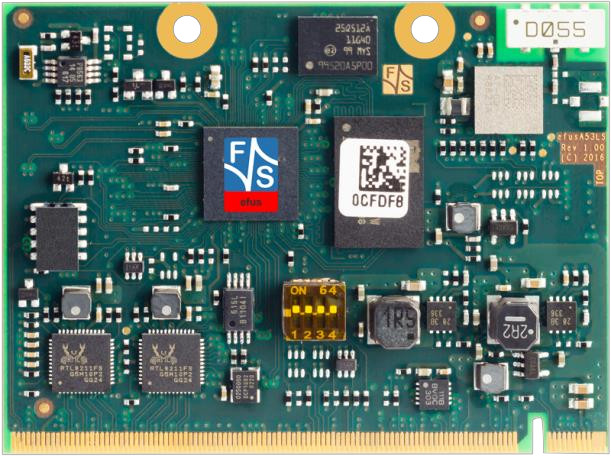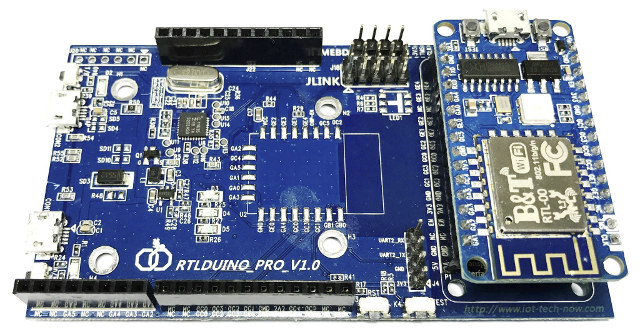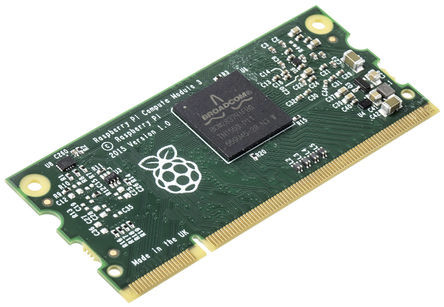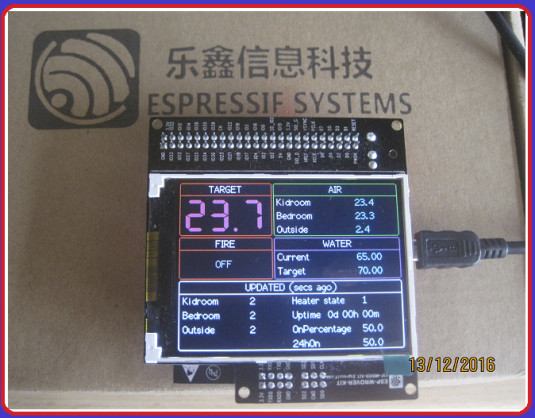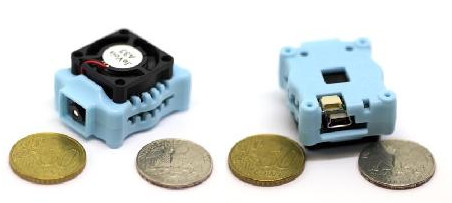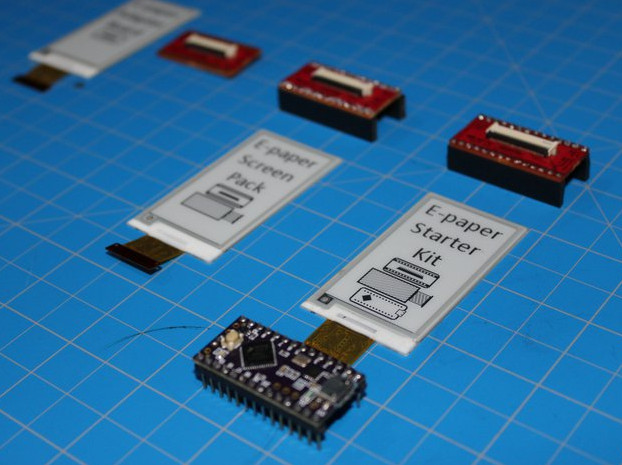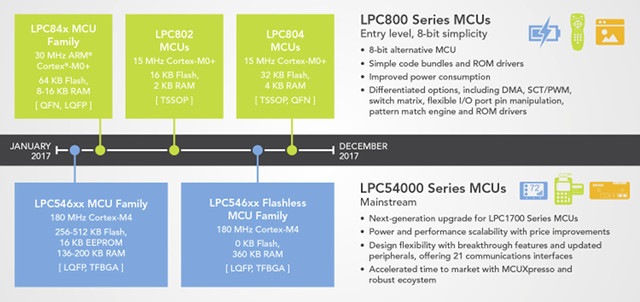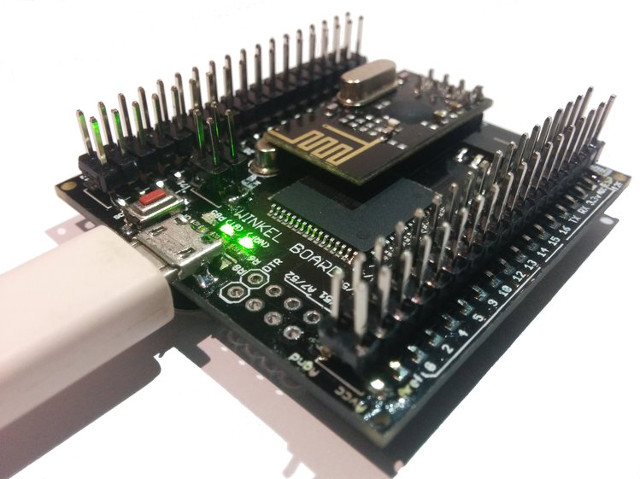NXP QorIQ LS1012A is a single core Cortex A53 communication processor that offers a 64-bit update to LS1021A dual core Cortex A7 processors found in gateways such as NXP LS1021A-IOTA IoT gateway reference design, and F&S Elektronik System has just launched efus A53LS system-on-module powered by the processor with up to 1GB RAM, up to 64SQPI NOR, access to the communication interfaces and peripherals from the processor via an efus compliant edge connector, and long term availability until 2030. efus A53LS COM specifications: Processor – NXP QorIQ Layerscape LS1012A single core ARM Cortex-A53 @ up to 800MHz System Memory – 512MB DDR3 by default, supports up to 1GB DDR3 RAM Storage – Up to 64MB QSPI NOR flash on-module, I/Os for SATA and SD card on edge connector Connectivity – 2x Realtek RTL8211F(N) Gigabit Ethernet transceiver chips, optional wireless module with dual WiFi IEEE802.11b/g/n/ac and Bluetooth 4.0 LE efus edge […]
RTL8710 Ameba Arduino Development Board and Ameba Arduino v2.0.0 SDK Released
We’ve already seen a NodeMCU lookalike board called RTLDuino based on Realtek RTL8710AF ARM Cortex M3 WiSoC earlier this month, that can be programmed with a community supported Arduino port also called rtlduino via a JLink SWD debugger, but now Realtek has just launched Ameba RTL8710 Arduino board, and released Ameba Arduino v2.0.0 SDK which brings official Arduino support to RTL8710AF platforms. There appears to be two versions of the development kit: RTLDUINO_PRO_V1.0 and REALTEK-AMEBA_RTL8710_V2.0, but based on the user manual they seem to be identical, and as you can see from the above picture, it includes a baseboard and the aforementioned RTLDuino board. RTL8710 Ameba Arduino HDK key features: SoC – Realtek RTL8710AF ARM Cortex-M3 MCU @ 83 MHz with 802.11 b/g/n WiFi, hardware SSL engine connected to the baseboard via: RTLDuino board through female header B&T RTL-00 module soldered on module footprint USB – 2x micro USB ports, […]
Raspberry Pi 3 Compute Modules CM3 and CM3L Launched for $30 and $25
We all knew Raspberry Pi Compute Module 3 were about to be launched soon, as the Raspberry Pi foundation announced a partnership with NEC displays last October, and the datasheet for two version of the Broadcom BCM2837 based system-on-module, CM3 and CM3L (Light), was released shortly after. The good news is that the modules have officially been launched for $30 and $25 for respectively Compute Module 3 with 4GB flash, and Compute Module 3 Light with the SD card signals exposed via the SO-DIMM connector. The foundation has also lowered the original compute module price to $25. Here are Compute Module 3 specifications as a reminder: SoC – Broadcom BCM2837 quad core Cortex A53 processor @ 1.2 GHz with Videocore IV GPU System Memory – 1GB LPDDR2 Storage CM3L – SD card signals through SO-DIMM connector CM3 – 4GB eMMC flash 200-pin edge connector with: 48x GPIO 2x I2C, 2x SPI, […]
ESP32-WROVER-KIT Devkit Supports Espressif ESP32 Modules, Includes a 3.2″ LCD Display
Yesterday Olimex wrote a blog post informing us that ESP32-CoreBoard was back in stock, one the many ESP32 boards launched late this year, but still hard to get. The company also mentioned they’d have limited quantity of the new ESP32-WROVER with JTAG and LCD display together with the picture below. ESP32 is quite more powerful than ESP8266 so it makes sense to have an ESP32 development kit with an LCD display. A quick DuckDuckGo search led me to ESP-WROVER-KIT Getting Started Guide, where we can find more details including the overall specifications: Compatible with ESP-WROOM-32 and ESP32-WROVER modules based on ESP32 dual core Tensilica L108 processor clocked at up to 240 MHz with WiFi and Bluetooth LE connectivity Storage – Micro SD slot Display – 3.2″ LCD display connected via SPI USB – 1x micro USB port Expansion 8-pin UART header 6-pin SPI header 48-pin header for I/Os and camera […]
JeVois-A33 is a Small Quad Core Linux Camera Designed for Computer Vision Applications (Crowdfunding)
JeVois Neuromorphic Embedded Vision Toolkit – developed at iLab at the University of Southern California – is an open source software framework to capture and process images through a machine vision algorithm, primarily designed to run on embedded camera hardware, but also supporting Linux board such as the Raspberry Pi. A compact Allwinner A33 has now been design to run the software and use on robotics and other projects requiring a lightweight and/or battery powered camera with computer vision capabilities. JeVois-A33 camera: SoC – Allwinner A33 quad core ARM Cortex A7 processor @ 1.35GHz with VFPv4 and NEON, and a dual core Mali-400 GPU supporting OpenGL-ES 2.0. System Memory – 256MB DDR3 SDRAM Storage – micro SD slot for firmware and data 1.3MP camera capable of video capture at SXGA (1280 x 1024) up to 15 fps (frames/second) VGA (640 x 480) up to 30 fps CIF (352 x 288) […]
SonikTech e-Paper Shield Starter Kit Relies on Teensy LC MCU Board
Soniktek Electronics has designed the “e-Paper Shield Starter Kit” featuring Pervasive Displays’ E2215CS062 e-paper screen, and an adapter board to connect it to Teensy LC (Low Cost) board powered by NXP Kinetis L ARM Cortex M0+ microcontroller @ 48 MHz, or other 3.3V MCU boards supporting SPI. Adapter board & display specifications: Supports Pervasive Displays 2.15″ E2215CS062 e-paper screen with 208 x 112 resolution, no backlight required, fully sunlight-readable Communication protocol – SPI @ 3.3V Sensor – On-board thermometer with I2C interface Dimensions – Screen: 48 mm x 26 mm; adapter board fits into Teensy-LC module (36x18mm) The advantages of e-Paper display are that they don’t require power to maintain an image, and they can be read in sunlight, just like actual paper. I can’t remember having seen many – if any – low cost e-Paper development kits so far, and the project is open source hardware with design files and […]
NXP LPC Microcontrollers Roadmap for 2017 – LPC800 and LPC54000 Series
With the acquisition of Freescale, NXP now has both Kinetis and LPC ARM Cortex M micro-controller families. The company has kept selling both so far, but it’s unclear whether they’ll keep developing new Kinetis MCU family in the future. There’s no such doubt about LPC family with the company having published a 2017 roadmap for ARM Cortex M0+ based LPC 800 series, and ARM Cortex M4 based LPC54000 series. LPC800 series MCUs are promoted as 8-bit MCU alternatives, and three new models are expected next year: LPC84x ARM Cortex M0+ @ 30 MHz with 64KB flash, 8 to 16KB RAM available in QFN and LQFP packages. LPC802 ARM Cortex M0+ @ 15 MHz with 16KB flash, 2KB RAM available in TSSOP packages LPC804 ARM Cortex M0+ @ 15 MHz with 32KB flash, 4KB RAM available in QFN or TSSOP packages There will be new models of the more powerful LPC54000 […]
$24 Winkel Arduino Compatible Board Includes WiFi, Bluetooth, 2.4 GHz RF, and an RTC (Crowdfunding)
There are plenty of Arduino compatible boards with WiFi based on ESP8266 WiSoC going for around $5 to $10, and with ESP32 processor, we are starting to have $15 to $20 boards with both WiFi and Bluetooth, but while ESP-IDF SDK has been progressing nicely, some parts of Bluetooth functionality are still not implemented. Winkel board offers an interesting alternative by offering WiFi, Bluetooth, 2.4GHz ISM, and an RTC for $24. Winkel board specifications: MCU – Microchip/Atmel ATmega128 MCU @ 16 MHz with 128KB flash memory, 4KB SRAM, 4KB EEPROM Connectivity WiFi 802.11 b/g/n via ESP12E module based on ESP8266 Bluetooth 2.0 + EDR via HC-05 module RF Radio – NRF24l01 2.4 GHz ISM radio. (Note: It might be possible to use it for Bluetooth LE connection, see here and there). I/Os (through both Atmel MCU and ESP8266) 38x Digital I/Os 7x PWM Digital I/Os 8x Analog Inputs USB – […]


